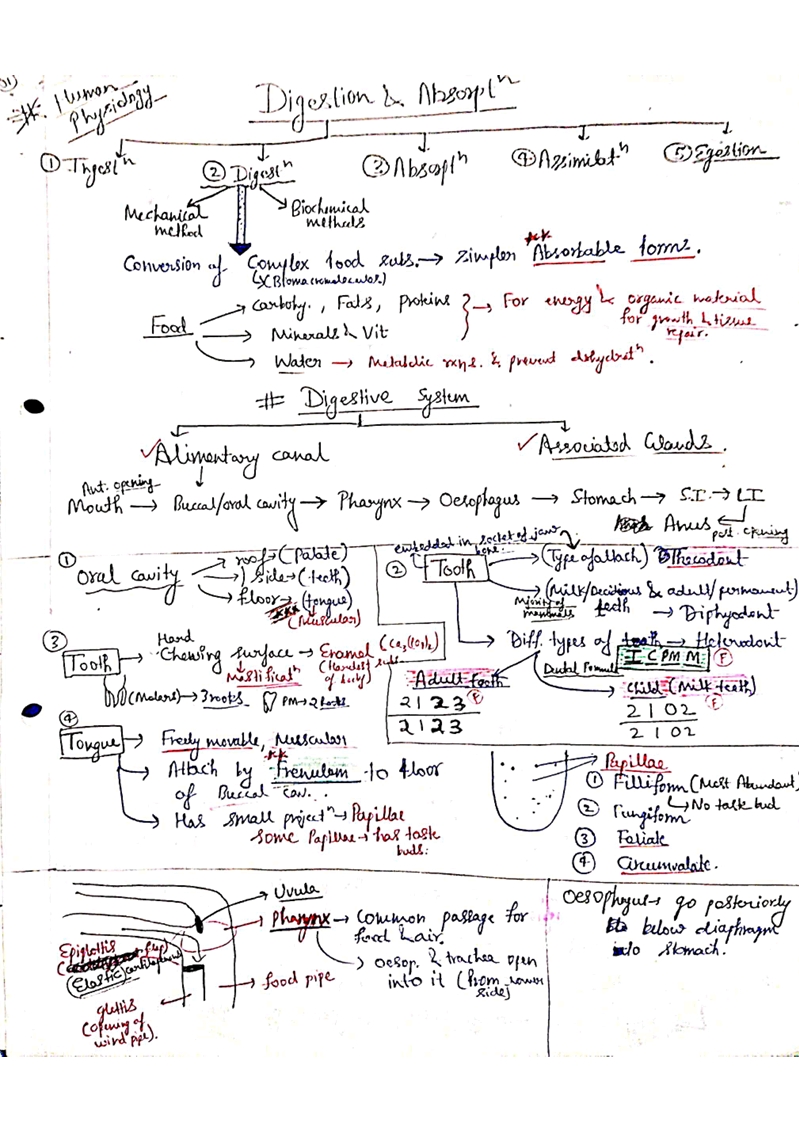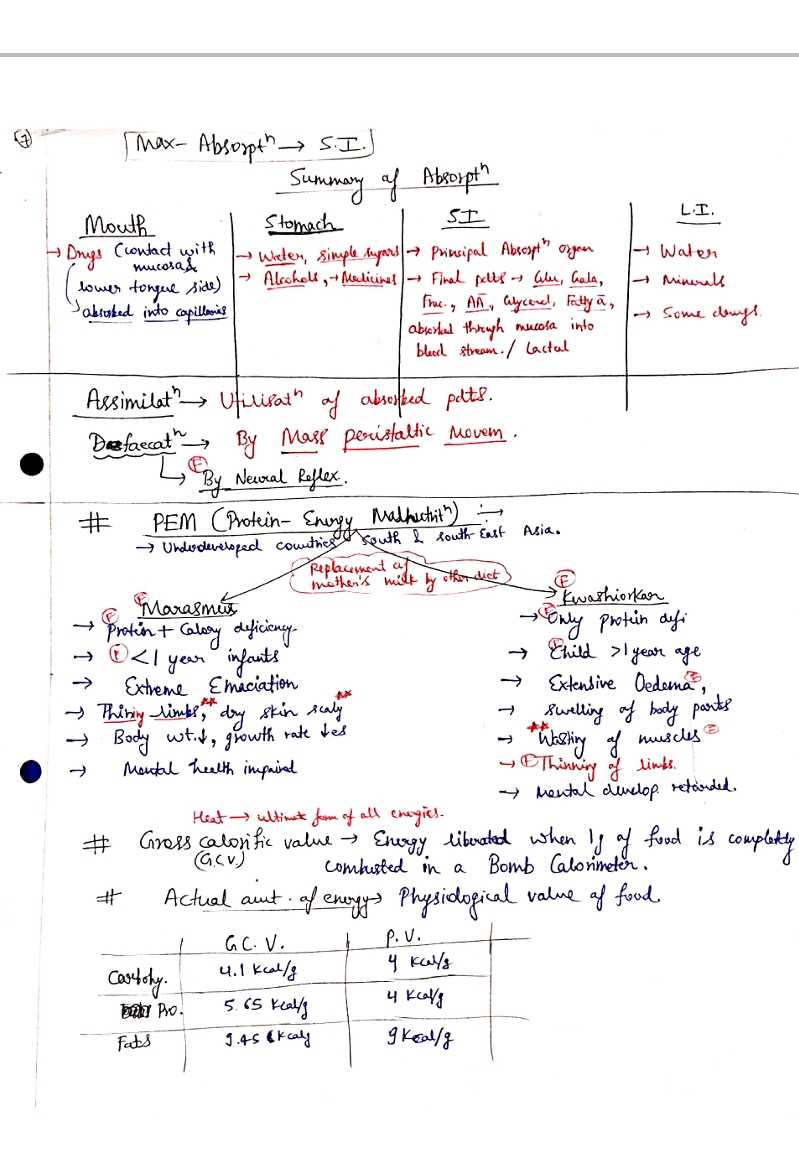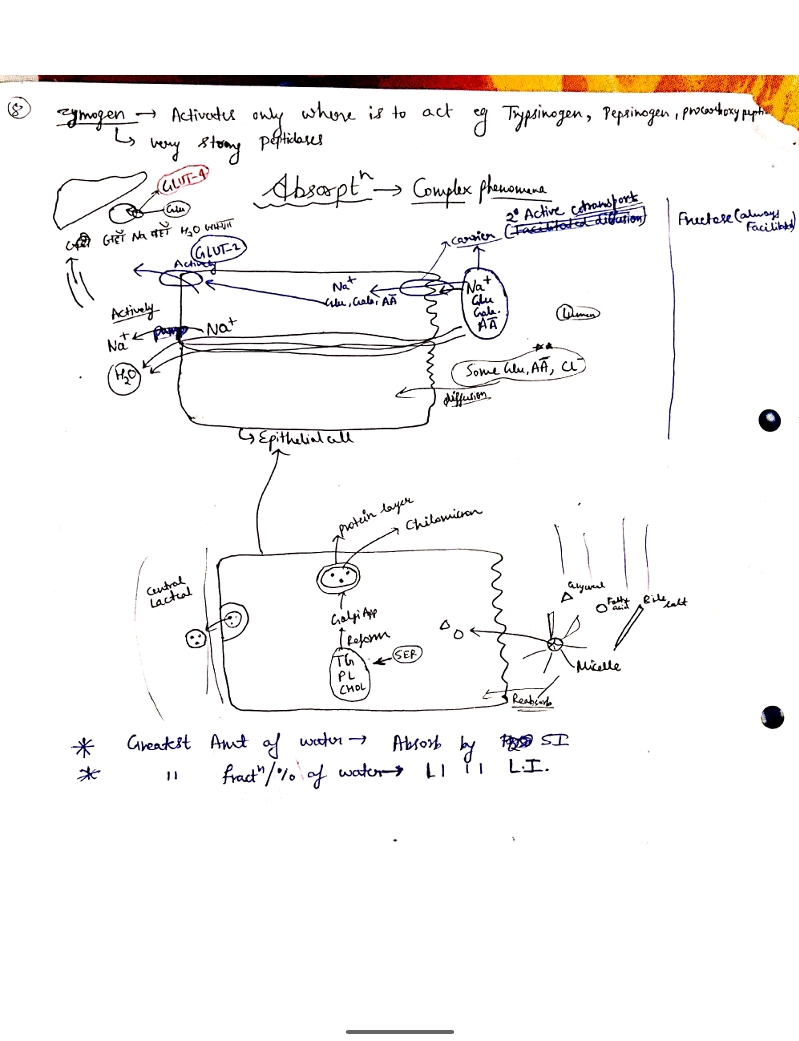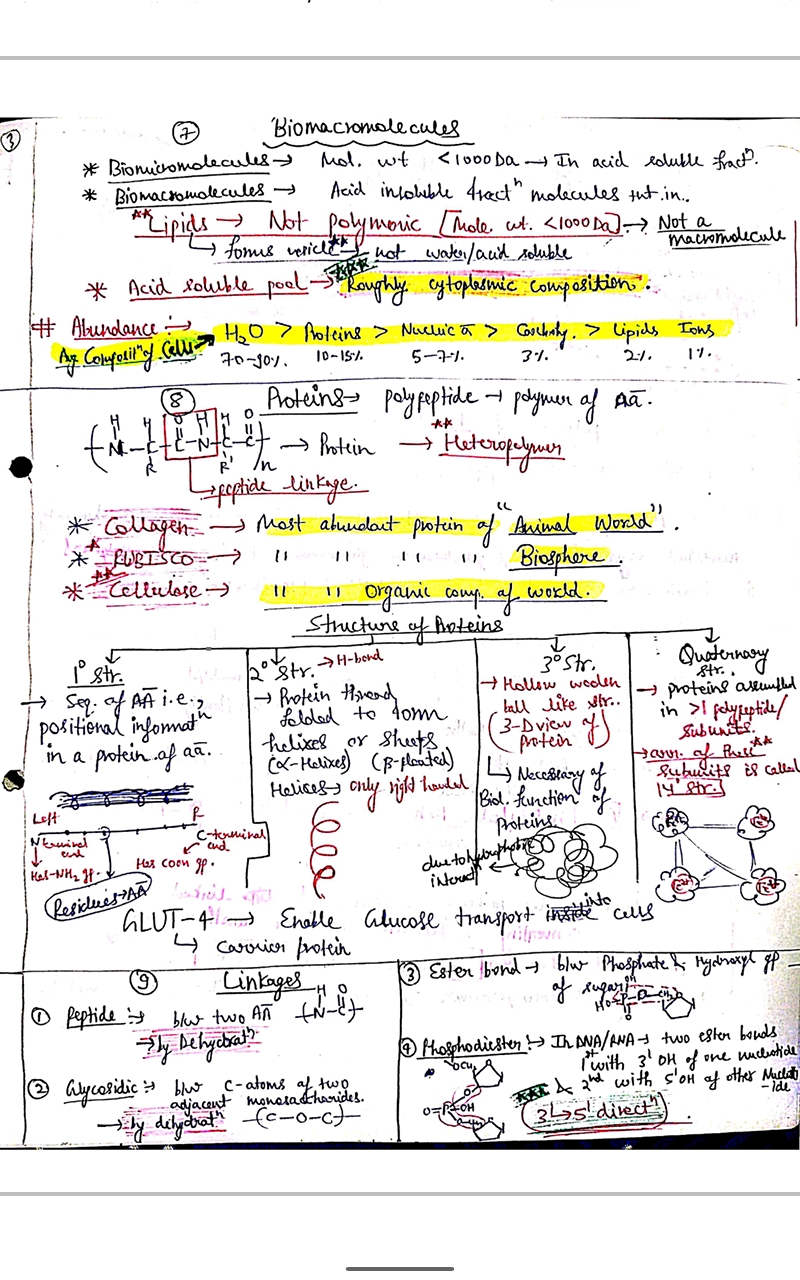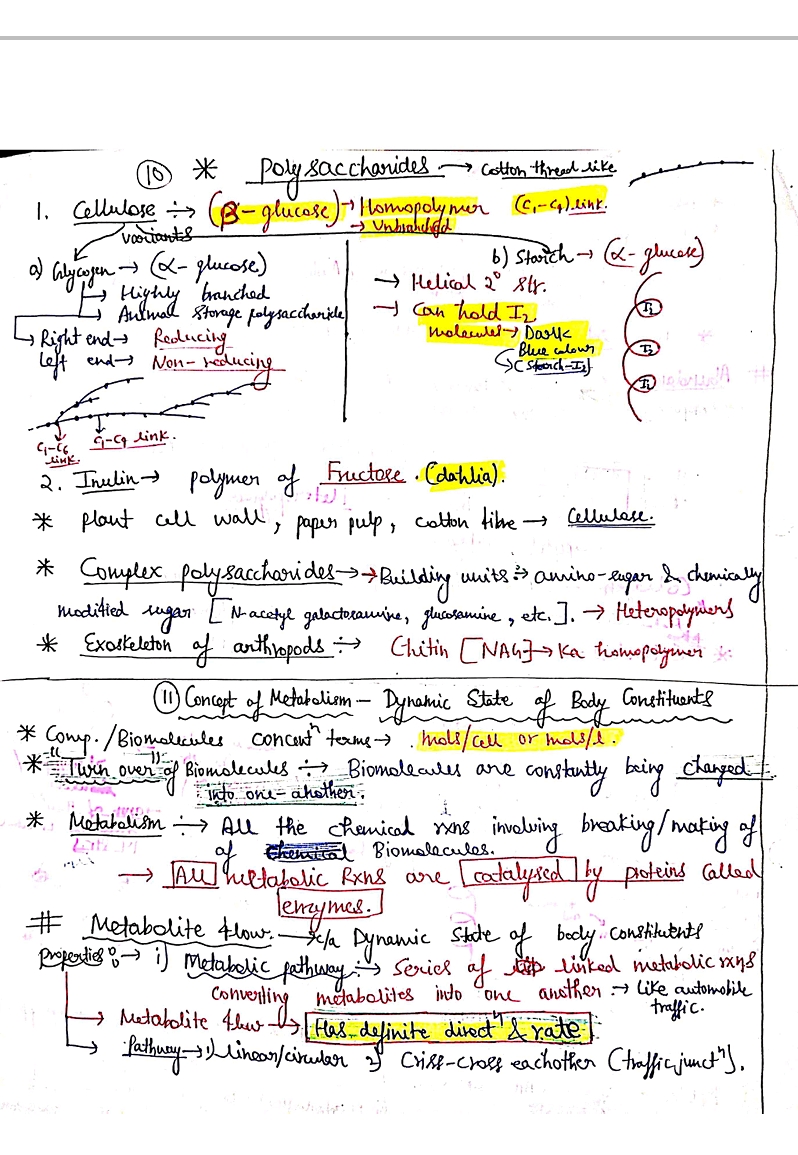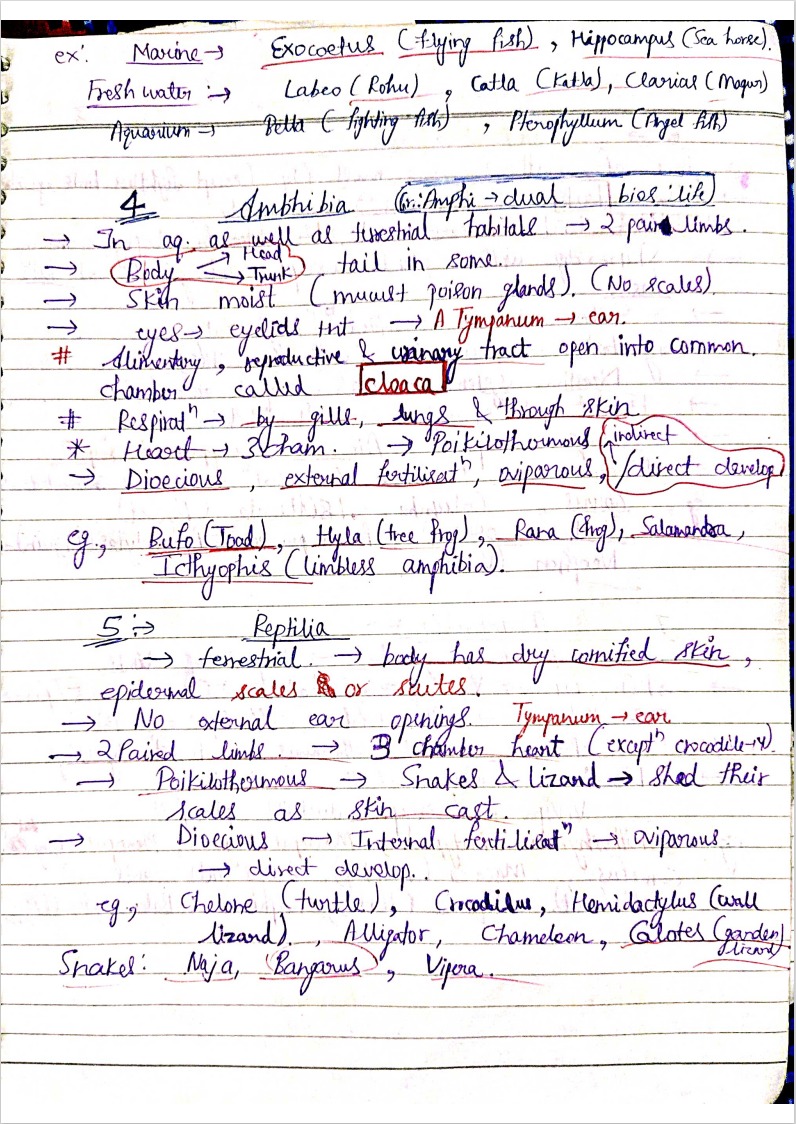In order for our bodies to absorb nutrients from the food we eat, digestion and absorption are essential functions. Food is first broken down into smaller molecules in the mouth by enzymes, which initiate digestion. Further breakdown of food takes place in the stomach and small intestine due to the many enzymes and acids it comes into contact with on its journey through the digestive tract. Nutrients are taken into the circulation in the small intestine, where they are subsequently utilized by cells across the body. Our bodies get the vital nutrients they require for growth, healing, and energy thanks to this complex process.
Sunday, April 28, 2024
If you want to download then click here
Welcome to the intriguing field of biomolecules, where the study of the building elements of life combines biology and chemistry. We will explore the complex structures and roles of molecules in this course, which are essential to all living things. Join me as we set out on a quest to comprehend the chemical foundation of life itself, covering everything from lipids to nucleic acids, carbohydrates to proteins."
If you like this then share and comment thanks
Monday, April 22, 2024
The structural organization of animals is a fascinating field of biology that explores the intricate arrangement of tissues, organs, and systems within their bodies. At the microscopic level, animals' bodies are made up of different types of cells, each with its unique structure and function. These cells are grouped into tissues that work together to perform specific functions, such as muscle tissue for movement or nervous tissue for communication.
At the macroscopic level, animals' bodies exhibit a remarkable diversity in their anatomical structures. For example, some animals have streamlined bodies that are well-suited for swimming, while others have strong limbs for running or climbing. These structures are perfectly adapted to suit the specific lifestyles and environments of each species. The wings of birds and insects are uniquely adapted for flight, while the fins of fish are perfectly suited for swimming.
The organization of animals' structures not only enables them to carry out vital functions such as respiration, digestion, and locomotion but also reflects the evolutionary adaptations that have shaped their biology over millions of years. The complex interplay between form and function allows animals to survive and thrive in diverse habitats across the globe, from the hot and arid deserts to the cold and icy tundra.
Exploring the structural organization of animals unveils a captivating tapestry of form and function, offering insights into the fundamental principles of life and the remarkable adaptations that have allowed creatures to survive in a constantly changing world. By understanding how the structures of animals are organized, scientists can gain a deeper appreciation for the complexity of life and the incredible diversity of the natural world.
By studying the structural organization of animals, we can gain an in-depth understanding and appreciation for the intricate workings of life and the incredible diversity of forms that have evolved on our planet. Every aspect of an animal's anatomy, ranging from the tiniest cell to the integration of complex organ systems, plays a vital role in its ability to survive and thrive in its environment. By comprehending these structural adaptations, scientists can unlock valuable insights into the fundamental principles of biology and the interconnectedness of all living organisms. As we continue to delve deeper and unravel the mysteries of the animal kingdom, we are continually amazed and humbled by the sheer beauty and complexity of the structures that serve as the foundation of life itself.
Monday, April 15, 2024
The Animal Kingdom, or Animalia, comprises a diverse range of multicellular organisms that include small invertebrates and large mammals. All of them are heterotrophic and multicellular, forming tissues and organs that are essential for their development, existence, and reproduction.
IF YOU WANT TO TAKE THIS NOTES THEN CLICK HERE
IF YOU WANT TO TAKE THIS NOTES THEN CLICK HERE
The Animal Kingdom is diverse and complex, ranging from small invertebrates to large mammals. Studying it helps us understand our planet. Protecting habitats is crucial to maintaining balance. Let's be stewards of the Earth and ensure a world where all species thrive.
Subscribe to:
Comments (Atom)

